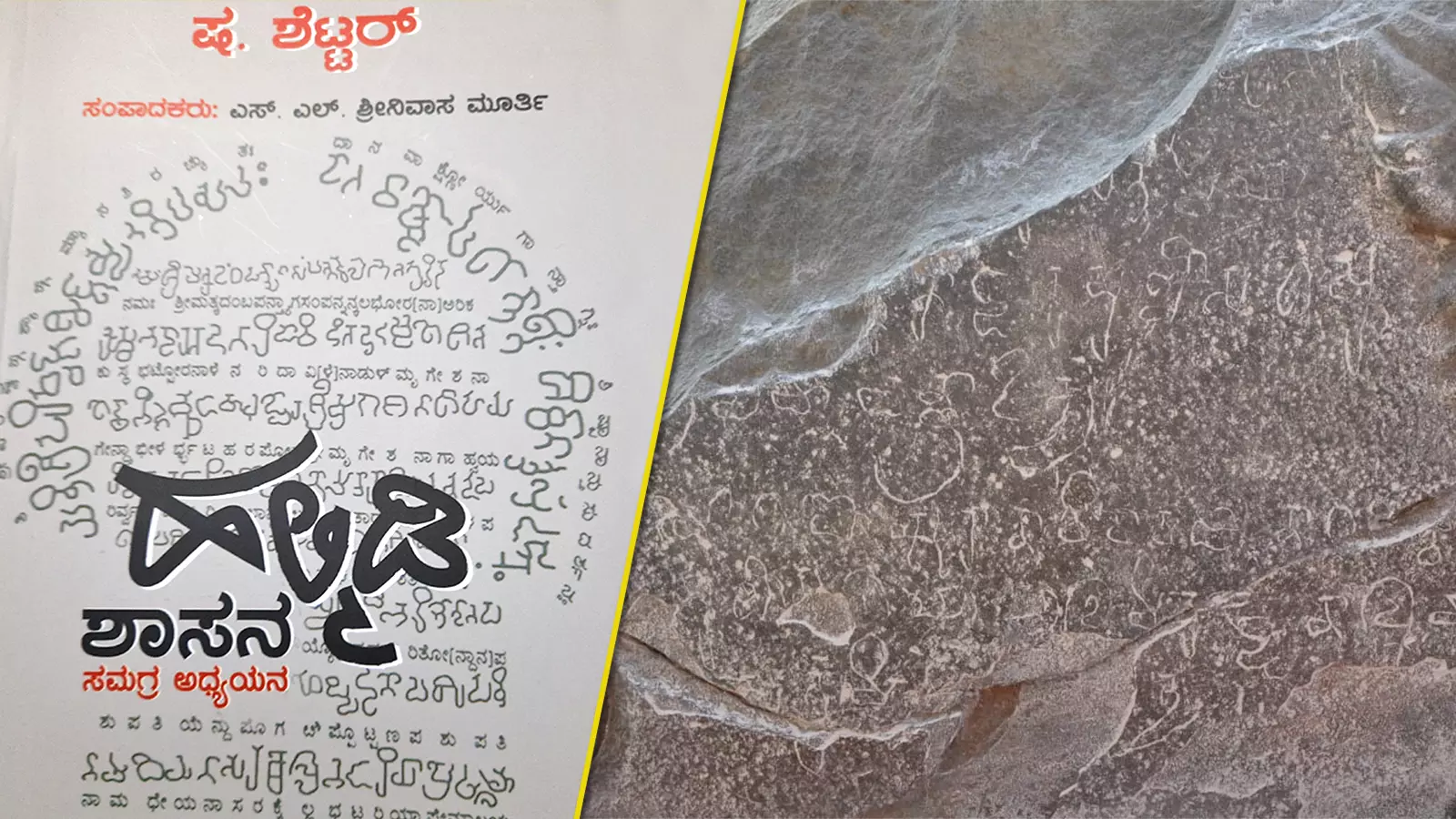
15 years after ‘classical’ tag, Kannada still cries for its place in the sun
The unanimous opinion of experts is that Karnataka must learn from Tamil Nadu, which leaves no stone unturned in getting funds from the Centre

It was 15 years ago that Kannada got the classical language status, but experts lament that nothing much has been achieved in terms of its study and research.
Bureaucratic approach and political one-upmanship of successive governments are blamed for the apathy. Also, lack of initiative by Lok Sabha MPs is making the Centre not release the state’s share of funds.
The antiquity of Kannada is a much discussed in the literary and linguistic universe. While historians widely believe that the first inscription, Halmidi, in Kannada dates back to 450 AD, some linguists argue that the stone inscription excavated at Talagunda near Shivamogga date back to 370 AD.
Despite being a 2,000-year-old language that got classical language status on November 1, 2008, the progress of study and research on the classical character of Kannada is moving at a snail’s pace.
Writers, linguists and language activists regret that Karnataka is yet to reap the benefits after getting the long-awaited classical status.
Apathetic MPs
“The Kannada government and elected representatives have not done anything concrete to make the best use of the recognition,” rues SG Siddaramaiah, former chairman of the Kannada Development Authority (KDA).
At the 86th Akhila Bharata Kannada Sahitya Sammelana held at Haveri in January, its president Doddarange Gowda criticised the Centre’s apathy in extending the constitutionally sanctioned benefit of classical language status to Kannada.
“The recognition of Kannada as a classical language by the Centre is just an eyewash. When it comes to allocation of funds for Kannada, there is a huge gulf between other states, including Tamil Nadu,” he said.
He added: “The elected representatives of Tamil Nadu fight with the Union government to get funds released for their language. The MPs of Karnataka should follow their method and get funds released from the Centre.”
According to sources in KDA, between 2017 and 2020, the Union government released Rs 643 crore for classical language studies in India. In the same period, only Rs 3 crore was given for the study of Kannada.
Kannada Bhavana in Bengaluru has been chosen for setting up the Centre of Excellence for Studies in Classical Kannada. But the fight has been on between the Mysore and Bengaluru literary and political lobbies over which city will house the CESCK
Tamil language
Former KDA chairman TS Nagabharana told The Federal that Tamil Nadu received Rs 42 crore for the development of Tamil language between 2017 and 2021, for the Tamil Nadu government created infrastructure to promote Tamil.
“During my tenure, I identified four acres on the premises of Mysore University. When the government was about to transfer the land, the process was stalled for reasons best known to those in power,” he says.
The unanimous opinion of litterateurs and representatives of Kannada organisation is that Karnataka must learn from Tamil Nadu, which leaves no stone unturned in getting funds from the Centre.
It has developed a state-of-the-art building for the Central Institute on Classical Tamil (CICT), which Prime Minister Narendra Modi inaugurated in January 2022 and the facility created for the study of classical Tamil.
Successive governments in Karnataka have faced a challenge in deciding a location for the Central Institute of Classical Kannada (CICK). Literary and political lobbies of both Bengaluru and Mysuru are pulling the strings in opposite directions.
Bengaluru or Mysuru?
While those from Mysuru are bent upon having the institute in their midst, their counterparts are trying to have it in Bengaluru. “The pendulum is oscillating between Mysuru and Bengaluru. Nobody is worried about the importance of CICK,” regrets, writer and Kannada activist K Rajkumar.
The Centre of Excellence for Studies in Classical Kannada (CESCK) opened at Mysuru in 2010 at the Central Institute of Indian Languages (CIIL), Mysuru. CIIL is under the Union Ministry of Human Resources Development. CESCK began to function in 2011.
The post of its project director was filled in 2014 with the appointment of Prof. HM Maheshwaraiah. Within a month, the post fell vacant as Maheshwaraiah moved to the Central University of Karnataka, Kalaburagi, as the vice-chancellor.
After a further two years, a new project director occupied the post. In 2016, a delegation of Kannada writers and activists met Union HRD Minister Smriti Irani seeking relocation of CESCK from Mysore to Bengaluru.
The government formed a two-member committee to decide on a venue to set up CESCK. Since then, the fight has been on between the Mysore and Bengaluru literary and political lobbies.
CESCK building
A senior writer at CESCK, who spoke to The Federal on condition of anonymity, asserted that it was wrong to say that CESCK has not done anything so far. The body intensely worked in the field of research, documentation, propagation and teaching of classical languages. Some classical texts in Kannada have crossed the language borders and reached readers across the country and abroad, he said.
Writer, artist, and sculptor L Shivalingappa regrets that the CESCK is yet to get its own building. Meanwhile, there is a demand to secure an autonomous status for CESCK. “Getting autonomous status to CESCK will help in availing the funds and hasten the study on the antiquity of Kannada,” says SG Siddaramaiah.
Similar is the opinion of Mukhyamantri Chandru, the state president of the Aam Aadmi Party and another former chairman of KDA. “The Karnataka government has not learnt anything from Tamil Nadu. Besides building a Centre, they are getting funds from the Union government,” he said.


